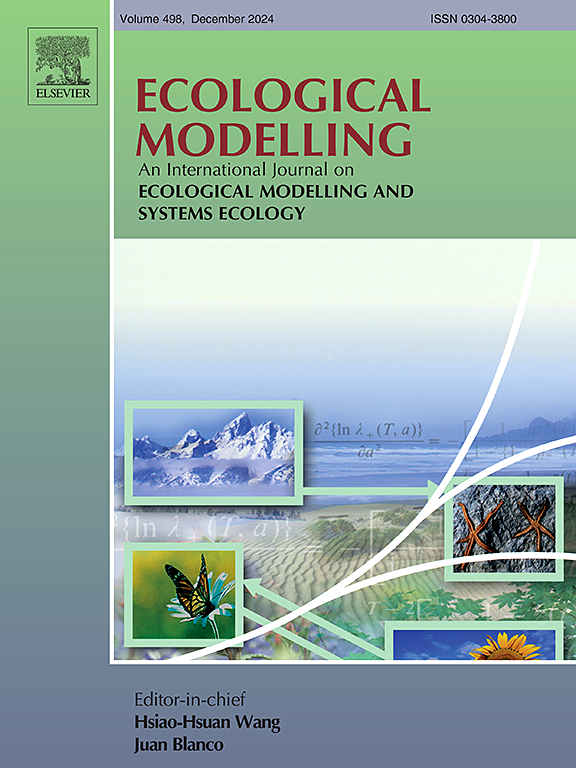Understanding predator-prey-competitor dynamics between Lower Missouri River Macrhybopsis and Scaphirhynchus using a population—bioenergetics model ensemble
IF 2.6
3区 环境科学与生态学
Q2 ECOLOGY
引用次数: 0
Abstract
The pallid sturgeon Scaphirhynchus albus is a long-lived, endangered fish in the Missouri River. Individuals become piscivorous as adults, so recruitment from stocking or reproduction could reduce populations of prey, including Macrhybopsis chubs. We constructed an individual- and age-based, multi-species, predator-prey-competitor model (IAMP) to represent the benthic community (sturgeons, chubs, and chironomids) of the Lower Missouri River (LMR) to explore scenarios of potential predator-prey-competitor dynamics. Our simulations suggest that chubs alone are unlikely able to support a level of LMR pallid sturgeon similar to historical or current populations. These simulations also suggest that adult pallid sturgeon may need to shift to non-chub prey fish to achieve the greater sizes observed in the Upper Missouri River. When annual hydrologic regimes were included, we found a negative relationship between chub relative abundance and previous year 30-day minimum flows. Inclusion of temporal environmental variability made it clear that large chub populations may be necessary to support LMR pallid sturgeon. When full stochasticity was included in the IAMP, chub population sizes needed to increase further to ensure continued reproduction and recruitment of both chubs and pallid sturgeon. These results support the hypothesis that the pallid sturgeon population in the Lower Missouri River may be food-limited. However, the full extent of this limitation and the management changes needed to address this will require more research on the biology and population dynamics of this fish community, on pallid sturgeon interactions with prey species, and on how sympatric species may be affected during the pallid sturgeon recovery process.
求助全文
约1分钟内获得全文
求助全文
来源期刊

Ecological Modelling
环境科学-生态学
CiteScore
5.60
自引率
6.50%
发文量
259
审稿时长
69 days
期刊介绍:
The journal is concerned with the use of mathematical models and systems analysis for the description of ecological processes and for the sustainable management of resources. Human activity and well-being are dependent on and integrated with the functioning of ecosystems and the services they provide. We aim to understand these basic ecosystem functions using mathematical and conceptual modelling, systems analysis, thermodynamics, computer simulations, and ecological theory. This leads to a preference for process-based models embedded in theory with explicit causative agents as opposed to strictly statistical or correlative descriptions. These modelling methods can be applied to a wide spectrum of issues ranging from basic ecology to human ecology to socio-ecological systems. The journal welcomes research articles, short communications, review articles, letters to the editor, book reviews, and other communications. The journal also supports the activities of the [International Society of Ecological Modelling (ISEM)](http://www.isemna.org/).
 求助内容:
求助内容: 应助结果提醒方式:
应助结果提醒方式:


